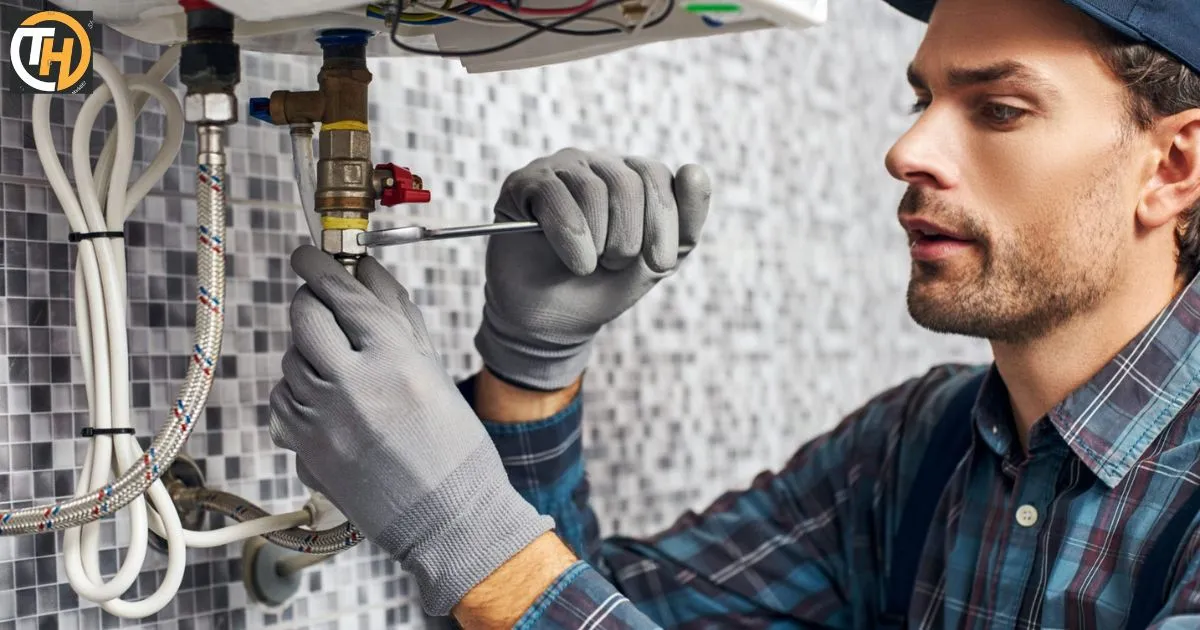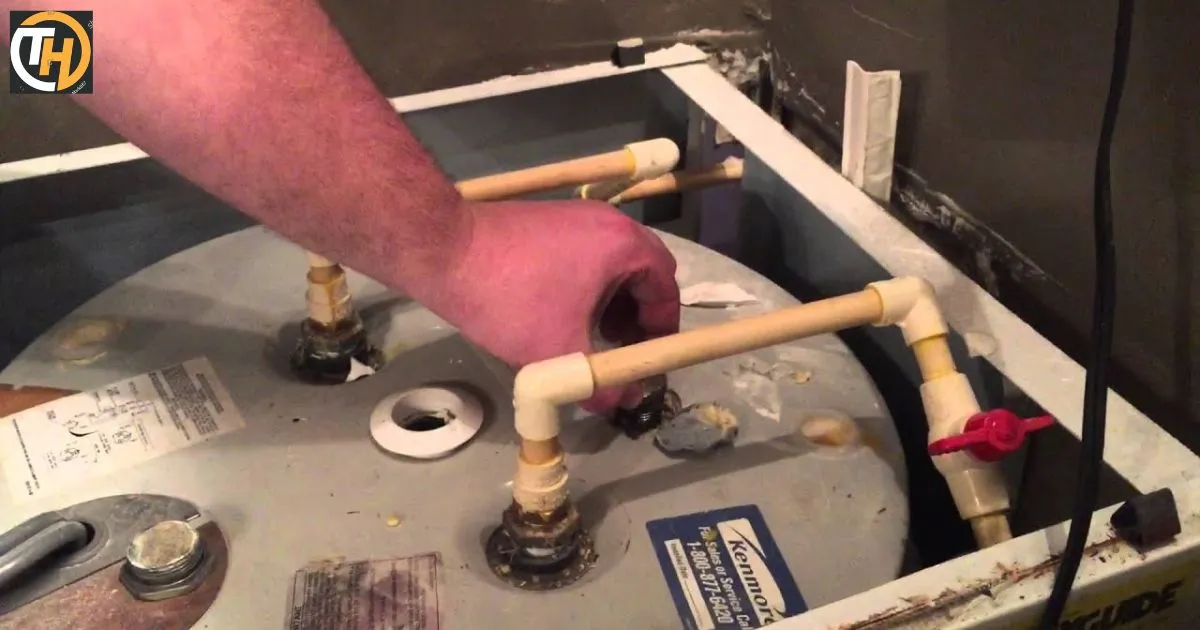To prevent calcium buildup in your water heater, it’s important to address the root cause of hard water. Hard water contains high levels of calcium and magnesium, which can accumulate inside the tank and reduce the efficiency and lifespan of your appliance. One solution is to install a water softener, which can remove these minerals before they enter your water heater.
The issue of calcium buildup in water heaters is an intriguing one. It’s a silent problem that often goes unnoticed until it starts causing issues such as reduced water flow, increased energy consumption, or even complete failure of the heater. The fascinating part is that this problem is entirely preventable with the right knowledge and practices.
Preventing calcium buildup involves a few key steps. Regular flushing of the water heater can help remove any existing buildup. Using a water softener can reduce the hardness of the water and thus prevent limescale formation. Additionally, installing a limescale inhibitor device can also be beneficial.
What Causes Calcium Buildup in Water Heaters
Calcium buildup, often referred to as limescale or scale, occurs when hard water – water with high mineral content, primarily calcium and magnesium – is heated. As water is heated, these minerals precipitate and solidify, creating a stubborn layer of deposits.
Hard water can lead to clogged pipes, reduced water flow, and inefficient energy usage, which ultimately shortens the lifespan of your water heater. To avoid these issues, it’s crucial to understand the root causes of calcium buildup and its potential effects on your water heater.
Preventive Measures
Preventing calcium buildup is not just about ensuring the longevity of your water heater; it’s also about maintaining the quality of your hot water. Here are some effective preventive measures:
- Regularly Flushing the Water Heater: Flushing your water heater annually helps remove sediment and mineral buildup. This process involves draining the tank, effectively reducing the chances of calcium buildup.
- Installing a Water Softener System: A water softener treats the hard water before it enters your water heater. It removes the minerals responsible for calcium buildup, ensuring that the water heater stays scale-free.
- Using a Sacrificial Anode Rod: Installing a sacrificial anode rod in your water heater can extend its lifespan. This sacrificial rod attracts minerals and prevents them from accumulating on the water heater’s walls.
- Reducing Water Temperature: Lowering the water temperature in your water heater can reduce the rate of mineral precipitation. However, be cautious not to set it too low, as this may create other issues like bacterial growth.
- Installing a Water Conditioner: Water conditioners alter the structure of the minerals, making them less likely to precipitate. Installing one can significantly reduce the chances of calcium buildup.
Maintenance and Cleaning

To keep your water heater in top condition and prevent calcium buildup, regular maintenance and cleaning are essential. Here’s a detailed step-by-step guide on how to clean a water heater with calcium buildup:
- Turn off the Power Supply: Before you begin any maintenance or cleaning, it’s crucial to ensure your safety. Turn off the power supply to the water heater. For electric water heaters, you can simply switch off the circuit breaker dedicated to the heater. If you have a gas water heater, turn the gas control valve to the “pilot” setting.
- Shut off the Cold Water Supply: Locate the cold water supply valve connected to your water heater and turn it off. This step prevents new water from entering the tank while you’re cleaning and flushing it.
Connect a Hose to the Drain Valve
- Near the bottom of your water heater, you’ll find a drain valve. Connect a garden hose to this valve. Ensure that the hose is securely attached to prevent leaks.
- Place the Other End of the Hose: Extend the other end of the garden hose to a suitable drainage location. This location can be a floor drain, a bucket, or an outdoor area where the hot water won’t cause any damage.
- Open a Hot Water Faucet: To facilitate the drainage process, open a hot water faucet in your home. This step is essential as it allows air to enter the tank, assisting in the smooth flow of water during the drainage.
- Open the Drain Valve: With the hose securely connected and a hot water faucet open, carefully open the drain valve at the bottom of the water heater. Be cautious during this step as the water may be scalding hot. Allow the water to flow out through the hose.
Monitor the Drainage
- Keep an eye on the water flowing out through the hose. The water may appear discolored initially, especially if there’s significant sediment and calcium buildup in the tank.
- Close the Drain Valve: Once the tank is completely empty, close the drain valve tightly to prevent any water from escaping. Disconnect the hose from the drain valve.
- Turn on the Cold Water Supply: Turn on the cold water supply to your water heater. This step begins the refilling process.
- Restart the Water Heater: With the cold water supply restored, you can now restart your water heater. For electric water heaters, switch the circuit breaker back on. For gas water heaters, set the gas control valve to the desired temperature..
Regular maintenance and cleaning are simple yet essential steps in keeping your water heater in optimal condition. They prevent calcium buildup and maintain the quality of your hot water.
Benefits of Prevention
To prevent or slow down the accumulation of scale in your hot water heater, you can utilize vinegar. After draining the tank, apply vinegar before reconnecting the power or refilling the unit with water. This method helps to mitigate the buildup of scale and maintain the efficiency of your water heater.
- Extended Water Heater Lifespan: Regular maintenance and preventive measures can significantly extend the life of your water heater.
- Improved Energy Efficiency: A clean water heater operates more efficiently, reducing energy consumption and lowering your utility bills.
- Better Water Quality: Preventing calcium buildup ensures that your hot water remains clean and free of mineral contaminants.
Common Myths and Misconceptions
As with many household topics, there are several myths and misconceptions about calcium buildup prevention. Let’s debunk a few:
- Myth: Boiling water prevents calcium buildup. Boiling water may temporarily reduce the effects of hard water, but it won’t prevent buildup in your water heater.
- Myth: Vinegar can completely remove calcium buildup. While vinegar can help dissolve some of the calcium, it may not fully remove stubborn deposits from your water heater.
here’s a table summarizing the key points and descriptions from the article on “How to Prevent Calcium Buildup in the Water Heater”:
| Section | Key Points and Descriptions |
| Introduction | Understanding the issue of calcium buildup in water heaters. |
| Why preventing it is essential. | |
| What Causes Calcium Buildup | Detailing the root causes of calcium buildup. |
| The effects of calcium buildup on water heaters. | |
| Preventive Measures | Regularly flushing the water heater: Remove sediment and mineral buildup. |
| Installing a water softener system: Treat hard water before it enters the heater. | |
| Using a sacrificial anode rod: Attracts minerals to prevent buildup. | |
| Reducing water temperature: Reduces the rate of mineral precipitation. | |
| Installing a water conditioner: Alters mineral structure to prevent precipitation. | |
| Maintenance and Cleaning | Stepbystep guide on how to clean a water heater with calcium buildup. |
| Perform cleaning at least once a year for optimal efficiency. | |
| Benefits of Prevention | Extended water heater lifespan. |
| Improved energy efficiency. | |
| Better water quality. | |
| Common Myths and Misconceptions | Debunking myths about calcium buildup prevention. |
| Conclusion | The importance of preventing calcium buildup in your water heater. |
This summary table provides a quick overview of the main points and their descriptions covered in the full article.
FAQs
How do you stop calcium buildup in a hot water heater?
To prevent calcium buildup in a hot water heater, regularly flush the tank and consider installing a water softener.
How do I stop my water heater from getting limescale?
Prevent limescale in your water heater by using a water softener or descaling the tank periodically.
How do I reduce calcium in my water tank?
Reducing calcium in your water tank involves using a water softener, cleaning or replacing the anode rod, and regular maintenance.
How do you prevent calcium buildup in water?
To prevent calcium buildup in water, employ water softeners, periodic tank flushing, and proper maintenance.
What is the best calcium remover?
The best calcium remover products often include descaling solutions or additives designed for water heaters and appliances.
Conclusion
Moving a hot water heater and preventing calcium buildup in it are tasks that require careful attention and understanding. While moving a water heater can be a physically demanding task, it can be accomplished with the right tools and safety measures.
On the other hand, preventing calcium buildup is more about regular maintenance and the use of appropriate water treatment methods. Both tasks, when done correctly, can significantly extend the lifespan and efficiency of your water heater, ensuring that you have a steady supply of hot water when you need it.











